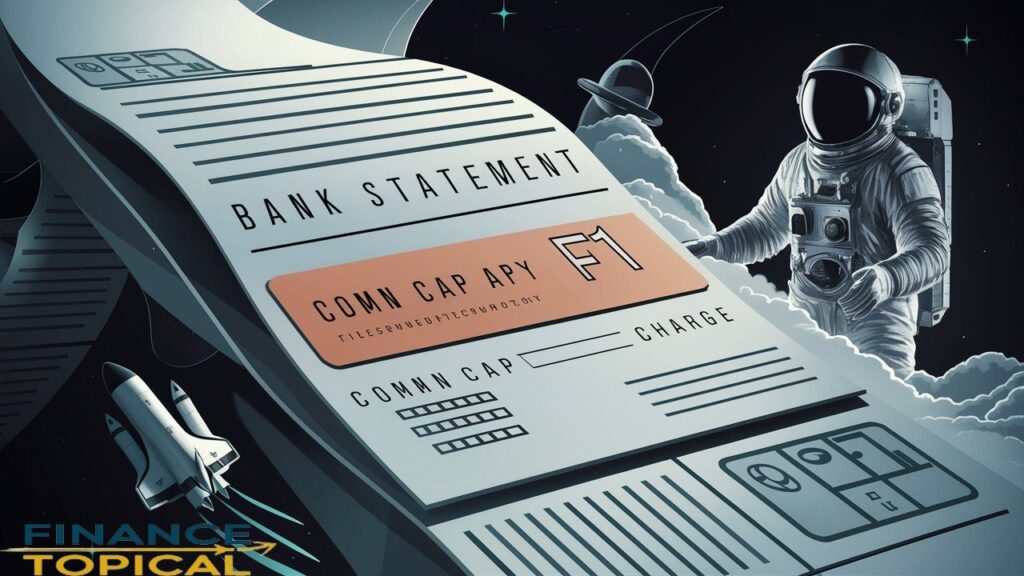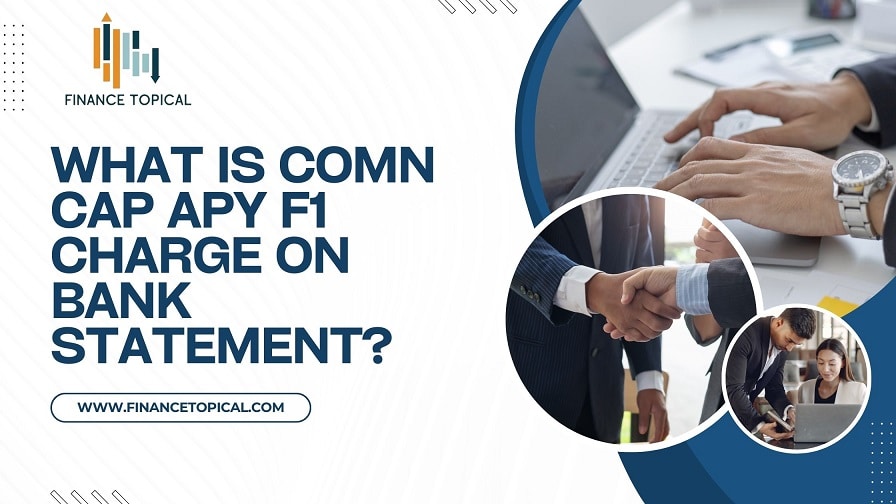Have you ever closely reviewed your bank statement only to be left puzzled by an odd charge like “Comn Cap APY F1“? You’re not alone. Unfamiliar transaction codes can make even the savviest personal finance gurus feel lost in a financial maze, questioning their financial confidence about statements. This blog post will help you decode that charge once and for all so you can gain financial clarity and control your financial destiny.
Key Takeaways
- Comn Cap APY F1 is a charge for an automatic payment
- The payment is for a Comenity Capital Bank credit card
- The F1 code likely signals the new Ulta store card
- AutoPay automatically processes the payment from your account when the bill is due
- Comenity partners with retailers to provide store-specific cards
Breaking Down the Confusing Credit Card Charge
Let’s start by dissecting what each component of the “Comn Cap APY F1” charge stands for:
- ACH: Automated Clearing House – the secure digital highway for electronic payments and money transfers between accounts
- COMN: Comenity Capital Bank – the financial institution behind the charge
- CAP: Capital – related to Comenity Capital Bank
- APY: AutoPay – a system that automatically pays charges from your account
- F1: A code for a Comenity Bank credit card, likely the new Ulta store card
Read this post if you see UK Regulated Charge on Your Bank Statement

The Charge Fully Explained
When you put it all together, “Comn Cap APY F1” indicates an automated payment made by Comenity Capital Bank for one of their credit cards, specifically a store-specific card like the Ulta card.
The AutoPay system is automatically pulling funds from your bank account to pay the bill for that Comenity credit card. The F1 code suggests it is likely for a retailer partnership card like the one recently launched with popular beauty store Ulta.
Read this post if you have seen FID BKG SVC LLC Charge on Your Bank Statement
Here are some examples of this charge that might appear on your bank statement:
- POS PUR Ach Comn Cap Apy f1
- POS PURCH Ach Comn Cap Apy f1
- POS PURCHASE Ach Comn Cap Apy f1
- POS REFUND Ach Comn Cap Apy f1
- CHKCARDAch Comn Cap Apy f1
- CHECKCARD Ach Comn Cap Apy f1
- POS Debit Ach Comn Cap Apy f1
- PRE-AUTH Ach Comn Cap Apy f1
- PENDING Ach Comn Cap Apy f1
- Misc. Debit Ach Comn Cap Apy f1
- CHKCARD Ach Comn Cap Apy f1
Why Might This Charge Be on Your Statement?
There are a few reasons why this charge may have shown up:
- You signed up for an Ulta or other store rewards credit card but forgot about it
- It’s an old retail card you no longer use but still has recurring charges
- Someone erroneously processed the charge or signed you up for a Comenity card
- It’s an authorized automatic payment for another family member’s Comenity credit card
Regardless of the reason, now you know that “Comn Cap APY F1” indicates an automated payment for a store-specific credit card issued by financial institution Comenity Capital Bank.
Read this post if you see MGP*Vinted Charge on Your Bank Statement

How to prevent Comn CAP APY F1 Auto Pay Credit Card Charge?
Here are some tips on how to prevent getting an unexpected Comn Cap APY F1 credit card charge:
Review Statements and Set Alerts
Carefully review your credit card and bank statements every month to catch any unfamiliar charges like Comn Cap APY F1 early. Also set up transaction alerts through your bank so you are notified of large or unusual payments.
Verify Charges You Don’t Recognize
If you spot a Comn Cap APY F1 charge and don’t recognize it, contact your bank or credit card company immediately to verify if it is fraud or simply an odd descriptor for an authorized purchase you forgot about. Provide as many details as possible.
Lock Down Your Accounts
Freeze your credit reports and set up fraud alerts in case your personal information was compromised somehow, allowing an unauthorized Comn Cap APY F1 charge. Also change online banking passwords periodically and avoid accessing accounts on public WiFi.
Read this post if you see VIOC Charge on Your Bank Statement
Formally Dispute the Charge
If the charge is confirmed as fraudulent by your bank, formally dispute it by submitting documents about the unauthorized Comn Cap APY F1 transaction. This requires the bank to investigate within 90 days.
Monitor Accounts Closely
Carefully scrutinize all bank and credit card statements following a fraudulent charge for at least a year. Unusual activity means personal data still may be exposed or accounts compromised by criminals hoping to get away with more charges.
Staying vigilant by thoroughly reviewing statements, verifying unfamiliar transactions, and freezing accounts when necessary helps avoid getting stuck paying for a fraudulent Comn Cap APY F1 credit card charge. Being proactive is key.
Final Words
Getting familiar with common transaction codes like “Comn Cap APY F1” demystifies confusing bank statements. Instead of feeling lost when you review your charges, you can leverage your expanded financial confidence and knowledge.
So next time you see an odd credit card charge on your statement, don’t panic! Simply break down the pieces step-by-step until that financial code reveals itself to you.

Daniel, a seasoned professional with over 5 years of experience in banking, property, and finance, brings a wealth of expertise to the table. This authoritative blog is meticulously curated to provide you with the most up-to-date financial insights. Delving into the dynamic realms of banking and mortgages, Daniel’s passion for finances shines through every post.










